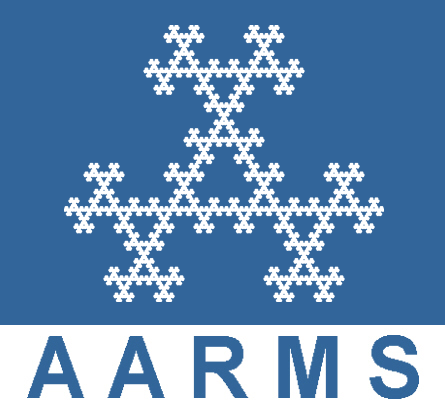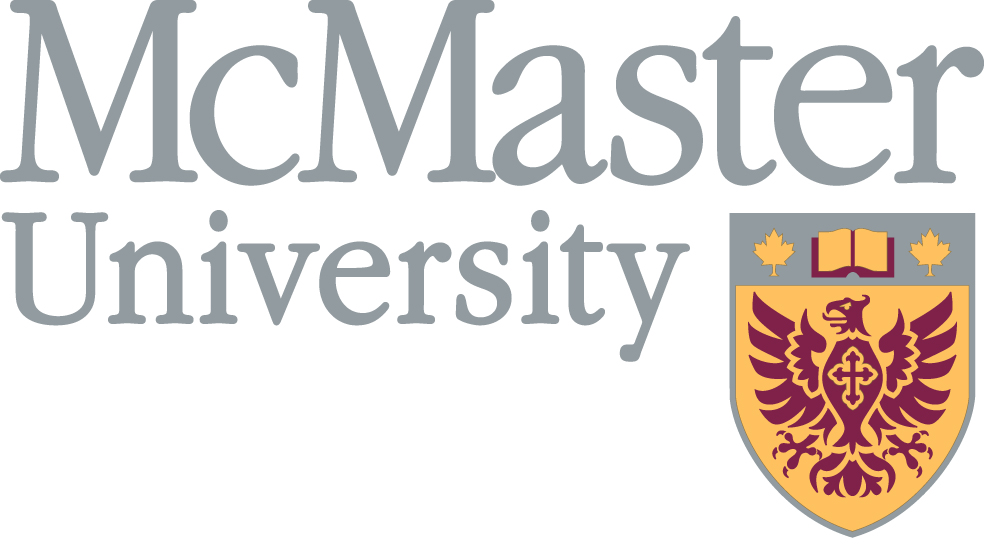Réunion d'hiver SMC 2016
Niagara Falls, 2 - 5 décembre 2016
Org: Lia Bronsard (McMaster University) et Ihsan Topaloglu (Virginia Commonwealth University)
[PDF]
- STEPHEN ANCO, Brock University
A vortex filament equation with peakon solutions [PDF]
-
The vortex filament equation is well-known to be equivalent under a Hashimoto transformation to the nonlinear Schrodinger equation which is part of a hierarchy of integrable equations. I will discuss recent work on deriving a new integrable equation that is connected to this hierarchy and has peakon solutions. Through a Hashimoto transformation, this equation represents a new kind of integrable vortex filament equation.
- ALMUT BURCHARD
On a non-local shape optimization problem related with swarming [PDF]
-
I will discuss recent work with Rustum Choksi and Ihsan Topaloglu on a shape optimization problem where the energy
functional is given by an attractive/repulsive interaction potential in power-law form. A natural conjecture is that balls
minimize this energy for large mass, and minimizers fail to exist if the mass falls below a certain critical threshold. We
have partial results that support this view.
- FABRICE COLIN, Laurentian University
The Effects of Dissymmetrical Nonlinearities on the Palais-Smale Condition for Elliptic Systems [PDF]
-
Palais-Smale and Palais-Smale-type conditions have been essential in the development of critical point theory on Banach and Hilbert spaces. In this talk, we will show, under a minimum number of assumptions, the impact of dissymmetrical nonlinearities on the fulfillment of the Palais-Smale condition by functionals whose critical points correspond to weak solutions of elliptic systems. Both cooperative and non-cooperative cases will be studied and applications will be discussed. This is joint work with Dr. Batkam.
- JAN FEYS, McMaster University
A spectral scheme for nonlinear integro-differential equations with discontinuity propagation; application to epidemic models [PDF]
-
In this talk, we consider the age-structured SIR and MSEIR epidemic models. These models contain two independent variables (an age variable $a$ and a time variable $t$) and are governed by a set of coupled nonlinear integro-differential equations. The numerical analysis of these equations is challenging and, in order to make a numerical study feasible, most studies in the past have discretized the age variable by considering a finite number of age groups. In practice, the number of age groups has been quite limited.
Our goal is to study the SIR and MSEIR equations in a continuous fashion, i.e., with a continuous age variable. We will do this by employing a spectral method to resolve the problem with respect to the variable $a$ up to machine precision. As far as we know, it is the first time that has been done for the two aforementioned disease models. The piece of software developed for our investigation uses Chebfun and will be made available online.
This is joint work with Zain Patel, Youssef Guirguis, Eric Koritko and Dr. Jamie Foster.
- ROBERT L JERRARD, University of Toronto
Effective energy of nearly-parallel Ginzburg-Landau vortex filaments [PDF]
-
Starting from the Ginzburg-Landau model in cylindrical 3d domains, we derive an effective free energy functional for nearly-parallel vortex filaments. As a con- sequence, we establish the existence of solutions of the Ginzburg- Landau equations in certain scaling regimes, possessing a collection of vortex filaments minimizing this effective energy. This is joint work with Andres Contreras.
- SILVIA JIMÉNEZ-BOLAÑOS, Colgate University
Nonlinear Neutral Inclusions: Assemblages of Spheres and Ellipsoids. [PDF]
-
If a neutral inclusion is inserted in a matrix containing a uniform applied electric field, it does not disturb the field outside the inclusion. The well known Hashin coated sphere is an example of a neutral coated inclusion. In this talk, we consider the problem of constructing neutral inclusions from nonlinear materials. In particular, we discuss assemblages of coated spheres and ellipsoids.
- XIN YANG LU, McGill University
Geometric complexity of Voronoi cells in optimal CVTs in 3D [PDF]
-
Centroid Voronoi Tessellations (CVT) are tessellations using Voronoi regions of their centroids.
This is closely related to
Gersho's conjecture, which states that there exists an asymptotically optimal CVT whose Voronoi regions are all rescaled copies of the same polytope. Straightforward in 1D, and proven in 2D, Gersho's conjecture is still open for higher dimensions. One of the main difficulties is that Gersho's conjecture is a strongly nonlocal, infinite dimensional minimization problem (even in 3D). In this talk we will present some recent results which reduce Gersho's conjecture to a local, finite dimensional problem in 3D. Joint work with Rustum Choksi.
- CY MAOR, University of Toronto
Non-Euclidean elasticity and asymptotic rigidity of manifolds [PDF]
-
Liouville's rigidity theorem (1850) states that a map $f:\Omega\subset R^d \to R^d$ that satisfies $Df \in SO(d)$ is an affine map. Reshetnyak (1967) generalized this result and showed that if a sequence $f_n$ satisfies $Df_n \to SO(d)$ in $L^p$, then $f_n$ converges to an affine map.
In this talk I will discuss generalizations of these theorems to mappings between manifolds, present some open questions, and describe how these rigidity questions arise in the theory of elasticity of pre-stressed materials (non-Euclidean elasticity). If time permits, I will sketch the main ideas of the proof, using Young measures and harmonic analysis techniques, adapted to the Riemannian settings. Based on a joint work with Asaf Shachar and Raz Kupferman.
- GEOFF MCGREGOR, McGill University
The Generalized Equal Area Principle [PDF]
-
The equal area principle is a technique used for locating shocks in weak solutions of scalar conservation laws. Despite widespread knowledge of the equal area principle, little work has been done to make it viable from a numerical standpoint. In particular, stronger analytical results for general initial conditions and convex flux functions are required. In this talk we present a theorem which accomplishes this. We provide an extension called the generalized equal area principle and prove it's equivalence to the Rankine-Hugoniot jump condition. This extension yields the basis for our proposed numerical framework, enabling high accuracy numerical methods which utilize the equal area principle. To conclude we will discuss key properties of our proposed numerical framework, along with numerical results and plans for future work.
- LI WANG, SUNY Buffalo
Modeling and simulation of multiscale crowd dynamics with emotional contagion [PDF]
-
We developed a hierarchy of models to study the crowd dynamics coupled with emotion. The model involves movement with a speed proportional to a fear variable that undergoes a temporal consensus averaging based on distance to other agents. In the continuum limit, we observe a threshold for the the interaction distance vs. interaction timescale that produce qualitatively different behavior for the system - in one case particle paths do not cross and there is a natural Eulerian limit involving nonlocal interactions and in the other case particle paths can cross and one may consider only a kinetic model in the continuum limit. We also designed efficient numerical methods to couple the kinetic and continuum models in a multiscale setting.





